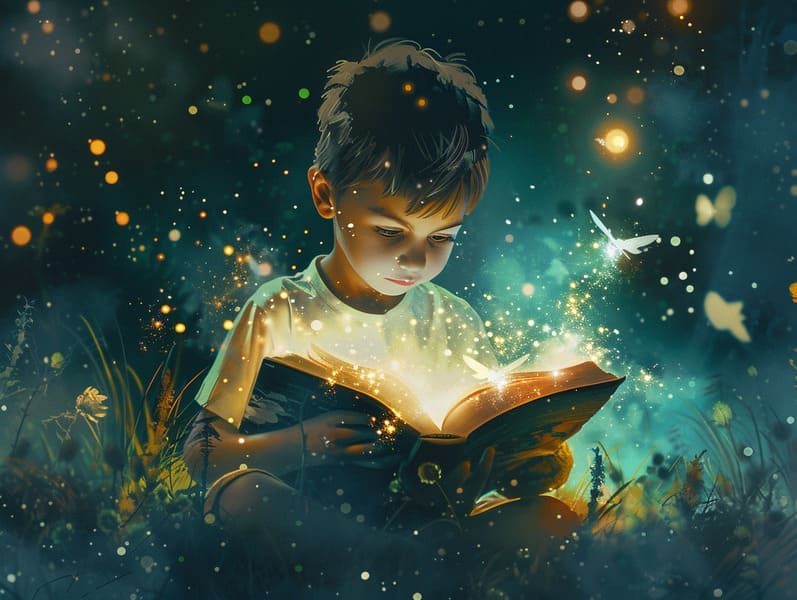The Creation of Historical Fairy Tales and the Eternal Enchantment.
The Creation of Historical Fairy Tales and the Eternal Enchantment.
Blog Article

Popular fairy tales have old origins. These tales have been shared from one generation to the next centuries before they were ever documented. They originated from a variety of traditions, including Western traditions. They were initially transmitted among elders, often carrying themes and messages aligned with the societal norms and beliefs of the time.
Jacob and Wilhelm Grimm, the two Grimm brothers, were among the first to compile many of these beloved tales. Their collection, "Grimm's Story Collection," included tales like "The Story of Cinderella," "Hansel and Grethel," and "Schneewittchen," which have since become pillars in the world of children's fairy tales. Similarly, the Danish author's fantastical narratives, such as "The Story of the Little Mermaid," and "The Little Duckling," have captured hearts worldwide, cementing their place in the pantheon of famous fairy tales.
Despite their age, these tales remain as meaningful as ever, especially as children's bedtime stories. These whimsical stories are now available in different formats, including beautifully illustrated books, charming animations, and digital fairy tales.
Their enduring popularity can be attributed to several delightful features:
Important Morals: Traditional fairy tales often offer important moral lessons. Stories like "The Shepherd Boy and the Wolf" teach the benefit of truthfulness, while "The Tale of the Tortoise and the Hare" show the virtues of persistence and modesty. These narratives offer the young clear distinctions between moral and immoral, building their moral compass in a mild yet important way.
Compassion and Knowledge: Classic fairy tales frequently feature protagonists facing obstacles and hardships, urging audiences to identify with their struggles and support their triumphs. For instance, "Beauty and the Beast" conveys the value of valuing inner qualities to acknowledge the inner self of a person, building kindness and perception.
Cultural Perception: Many old fairy tales are rooted in the cultural contexts from which they originated. Exploring these stories can provide enlightening views into different ways of life, nurturing a sense of world awareness and knowledge.
Inventiveness and Imagination: The enchanted elements in timeless fairy tales—talking animals—encourage children’s fantastical thinking. These narratives lead readers to imaginary realms, fostering creative ideas and a sense of curiosity that lasts a lifetime.
Traditional fairy tales are not only entrancing but also educational. They function as whimsical tools in fostering various cognitive and emotional skills in kids. When classic fairy tales are told out loud, they boost speech development by bringing new words and complex sentence structures. This practice also fosters listening abilities and attention, as kids pay close attention, ready to see what happens next.
Furthermore, discussing the themes and characters of classic fairy tales can enhance thought processes and reasoning skills. Young ones are educated to recognize patterns, guess what will happen, and comprehend cause and effect. These examinations also advance kids communicate their thoughts and feelings, nurturing their emotional intelligence.
In today’s information age, the prevalence of internet fairy tales has made these stories more obtainable than ever. Web platforms and web apps give huge assortments of ancient fairy tales that can be enjoyed or listened via anytime, anywhere. Fairy tales told out loud are particularly well-received, providing an engaging way for young readers to take part in these delightful tales. Spoken stories and spoken videos take characters and settings to life, often accompanied by entrancing background sounds and soundtracks that boost the story journey.
The timeless allure of timeless fairy tales lies in their ability to change to present days while keeping hold of their core messages. Contemporary adaptations of these fairy tales often integrate more multicultural protagonists and modern settings, making them relatable to today’s audience. However, the main ideas of valor, understanding, and justice remain unchanged, continuing to connect with kids of all ages.
Old fairy tales also offer a sense of warmth and closeness. They yield a structured narrative with a plain beginning, middle, and end, often concluding with the ending of conflicts and the triumph of virtue over vice. This assuredness can be comforting for young ones, granting a sense of consistency in an dynamic world.
Timeless fairy tales continue to charm and inform new generations, maintaining their beauty and impact in modern society. As children's night stories, they bring a perfect blend of enchantment and education, backing moral values, empathy, and creativity. The more info abundance of online fairy tales and the widespread nature of fairy tales narrated warrant that these classic narratives remain obtainable to new generations.
By continuing and telling these tales, we continue to revere the rich tapestry of mythology and cultural heritage. Whether you are experiencing a colorful picture book, enjoying a web-based collection, or listening on an audio story, the charm of ancient fairy tales is always within reach. These fairy tales point out of the immortal presence of storytelling and its ability to bring us together across epochs and places.
No matter if you are seeing a richly illustrated book, viewing a digital library, or listening on an audio story, the grandeur of traditional fairy tales is always within reach.
These stories remind us of the endless effect of tales and its ability to hold us together across time and space, forming a connection that enchants and educates alike.